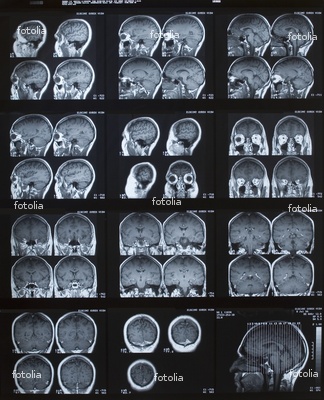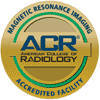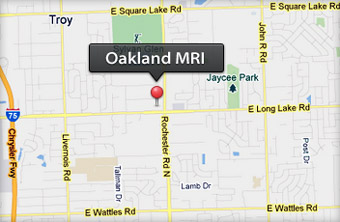St. Vincent dePaul Golf 2013
New Stroke Management Guidelines – Imaging: Symptoms Resolved
 Suspected transient ischemic attacks (TIAs) – Noninvasive cervical vessel imaging
Suspected transient ischemic attacks (TIAs) – Noninvasive cervical vessel imaging
- Transient ischemic symptoms – Neuroimaging within 24 hours
- Steno-occlusive disease – CT angiography or MR angiography of intracranial vasculature
The Bottom Line: MRI remains preferred over CT for imaging patients with suspected TIAs because it can provide insight into whether a stroke has occurred.
Unchanged: In patients with suspected TIAs, noninvasive imaging of cervical vessels is indicated. In those with transient ischemic neurologic symptoms, neuroimaging is recommended within 24 hours of symptom onset or as soon as possible in cases of delayed presentation. MRI is preferred over CT.
Revised: In cases of known steno-occlusive disease, CT angiography or MR angiography of intracranial vasculature is recommended to assess for proximal intracranial stenosis and/or occlusion. Catheter angiography is necessary to confirm diagnosis and assess stenosis severity.
St. Vincent de Paul 25th Annual Banquet
Oakland MRI has been a long-time supporter of St. Vincent DePaul, and this year’s 25th annual Awards Banquet was a special occasion indeed. As a proud Vincentian institution, Oakland MRI was a platinum sponsor of the banquet, as well as a camp sponsor for the upcoming 22nd Annual Golf Classic! The faith, values, hard work, and dedication of all those volunteers makes St. Vincent De Paul special among others, and we’re proud to continue our support. Congratulations to all the honorees!
Oakland MRI was proud to support the 10th annual Chaldean American Chamber of Commerce Awards Dinner
Oakland MRI was proud to support the 10th annual Chaldean American Chamber of Commerce Awards Dinner. We’d like to congratulate all the community leaders on their success in promoting strong business and family values. Among prominent elected officials, Governor Snyder delivered a great speech, in which his message communicated his focus on immigration, and also on all of our personal responsibility in being ambassadors of our beautiful state.
BREAST MRI: a must after breast implant!
 NBC’s Nightly News With Brian Williams, NBC’s Chief Medical Expert Dr. Nancy Snyderman reviewed a new US Food and Drug Administration (FDA) report in regard to silicone gel-filled breast implants. The report indicated that women should undergo surveillance with a breast MRI 3 years after implantation, and subsequently every 2 years. The FDA has recommended surveillance MRI for silent rupture since 2006, when silicone implants came back on the market for cosmetic augmentation.
NBC’s Nightly News With Brian Williams, NBC’s Chief Medical Expert Dr. Nancy Snyderman reviewed a new US Food and Drug Administration (FDA) report in regard to silicone gel-filled breast implants. The report indicated that women should undergo surveillance with a breast MRI 3 years after implantation, and subsequently every 2 years. The FDA has recommended surveillance MRI for silent rupture since 2006, when silicone implants came back on the market for cosmetic augmentation.
According to the American Society of Plastic Surgeons, breast augmentation was the number one cosmetic surgery in the country in 2011 with 307,000 women getting the procedure. This is a 4 percent increase from the previous year and a 45 percent increase from 2000.
Studies of saline breast implants and silicone gel breast implants conducted by implant manufacturers have shown that within the first three years, approximately three out of four reconstruction (breast cancer) patients and almost half of first-time augmentation patients experienced at least one local complication – such as pain, infection, hardening, or the need for additional surgery.
For example, among reconstruction patients:
46% of women with silicone gel implants and 21% with saline implants underwent at least one re-operation within three years;
25% of silicone patients and 8% of saline patients had implants removed; and
6% of silicone patients and 16% of saline patients experienced breast pain.
90% of breast implants rupture within 20 years
As the proverb goes, better safe than sorry.
Advanced Breast Cancer in Young American Women: On the Rise?
In the past 30 years, there has been a small but significant increase in the incidence of advanced breast cancer in American women 25 to 39 years of age, according to a study published in the February 27 issue of JAMA.
During the same period, there was no increase in advanced disease in older women, according to the researchers, led by Rebecca H. Johnson, MD, from the Seattle Children’s Hospital and the University of Washington.
In the young women, the incidence of breast cancer with distant involvement at diagnosis increased from 1.53 per 100,000 women in 1976 to 2.90 per 100,000 women in 2009. This is an absolute difference of 1.37 per 100,000, and is an average compounded increase of 2.07% per year (P < .001) over a 34-year interval.
MRI of temporomandibular joint disorders
Approximately 10 million individuals in the United States are affected by temporomandibular joint (TMJ) abnormalities (National Institutes of Health data, National Institute of Dental and Craniofacial Research). 1
The highest prevalence of temporomandibular disorders (TMD) is in women aged 20 to 40 years, with women representing 80% of patients being treated for TMD. 2,3 Magnetic resonance imaging (MRI) plays an important role in the evaluation of TMD, as it allows for a noninvasive depiction of the joint that is not otherwise available. Moreover, clinical diagnosis of TMJ abnormalities can be challenging, particularly given the psychosocial factors that can be involved in pain disorders. The diagnostic accuracy of the clinical examination is variable, ranging from 54% to 90%. 4
MRI Improves Long-Term Outcome Prediction for Patients With Mild Traumatic Brain Injury
Twenty-seven percent of mTBI patients with a normal CT scan showed evidence of abnormalities on brain MRI.
MRI may be better than CT scans at predicting whether patients with mild traumatic brain injuries (mTBI) are likely to have persistent neurologic problems, according to the results of a clinical trial published in the December 2012 Annals of Neurology.
Approximately 15% of patients with mTBI have measurable neurologic deficits at one year after injury, but clinicians have no definitive method of predicting patient outcomes.
To address this clinical need, Esther Yuh, MD, PhD, Assistant Professor in Residence at the University of California, San Francisco, School of Medicine, and her colleagues examined the potential of MRI to predict patient outcome three months after mTBI. The researchers prospectively followed 135 patients who were evaluated for acute head injury in the emergency departments of three level I trauma centers—San Francisco General Hospital and Trauma Center, the University of Pittsburgh Medical Center, and the University Medical Center Brackenridge in Austin, Texas. These centers were part of the Transforming Research and Clinical Knowledge in Traumatic Brain Injury study (TRACK-TBI).
MRI May Tell Alzheimer’s from Other Dementias
 Three-fourths of patients with Alzheimer’s disease or frontal-lobe degeneration had MRI-detected biomarker levels that correlated with the diagnoses, suggesting MRI has potential as a screening tool for the conditions, investigators reported.
Three-fourths of patients with Alzheimer’s disease or frontal-lobe degeneration had MRI-detected biomarker levels that correlated with the diagnoses, suggesting MRI has potential as a screening tool for the conditions, investigators reported.
MRI-predicted values for total tau and β-amyloid ratio (tt/Aβ) in gray matter correctly pinpointed the diagnosis in 75% of patients with genetically or neuropathologically confirmed diagnoses, according to Corey McMillan, PhD, of the University of Pennsylvania in Philadelphia, and colleagues. Predicted values also had good correlation with actual tt/Aβ measured in cerebrospinal fluid (CSF), they said.
The findings are consistent with previous in vivo and autopsy studies of CSF tt/Aβ, the group reported in the Jan. 8 issue of Neurology.
Why not stop the controversies with a Breast MRI?
Researchers estimated Wednesday that mammograms caused more than 1 million American women over the past three decades to be diagnosed with early-stage breast cancers that would not have proved fatal if left undetected and untreated — a controversial finding sure to provoke more heated debate over the benefits of the screenings.
The study, published in the New England Journal of Medicine, concluded that these women were “overdiagnosed” and “overtreated” because there was not a corresponding decline in the diagnosis of tough-to-cure breast cancers that have already spread. The authors said mammography has saved few lives.
“There’s been a dramatic increase in early-stage breast cancers that coincides with an increased use of mammograms,” said study co-author Dr. H. Gilbert Welch, a professor of medicine at the Dartmouth Institute of Health Policy and Clinical Practice in Hanover, N.H. “But it’s not enough to find early-stage breast cancer; it must translate into fewer women being diagnosed at a later stage, and we found this decrease to be remarkably small.”


